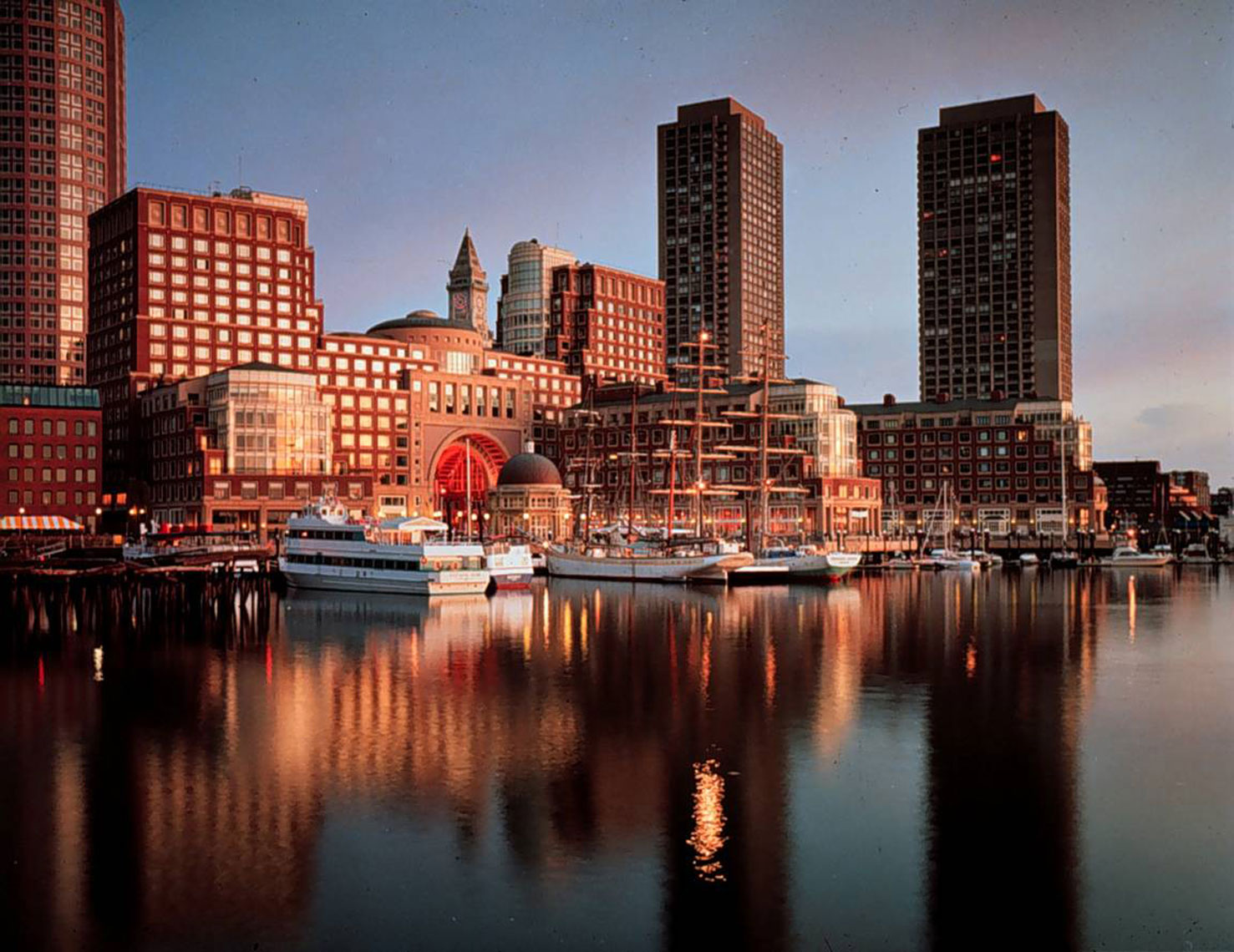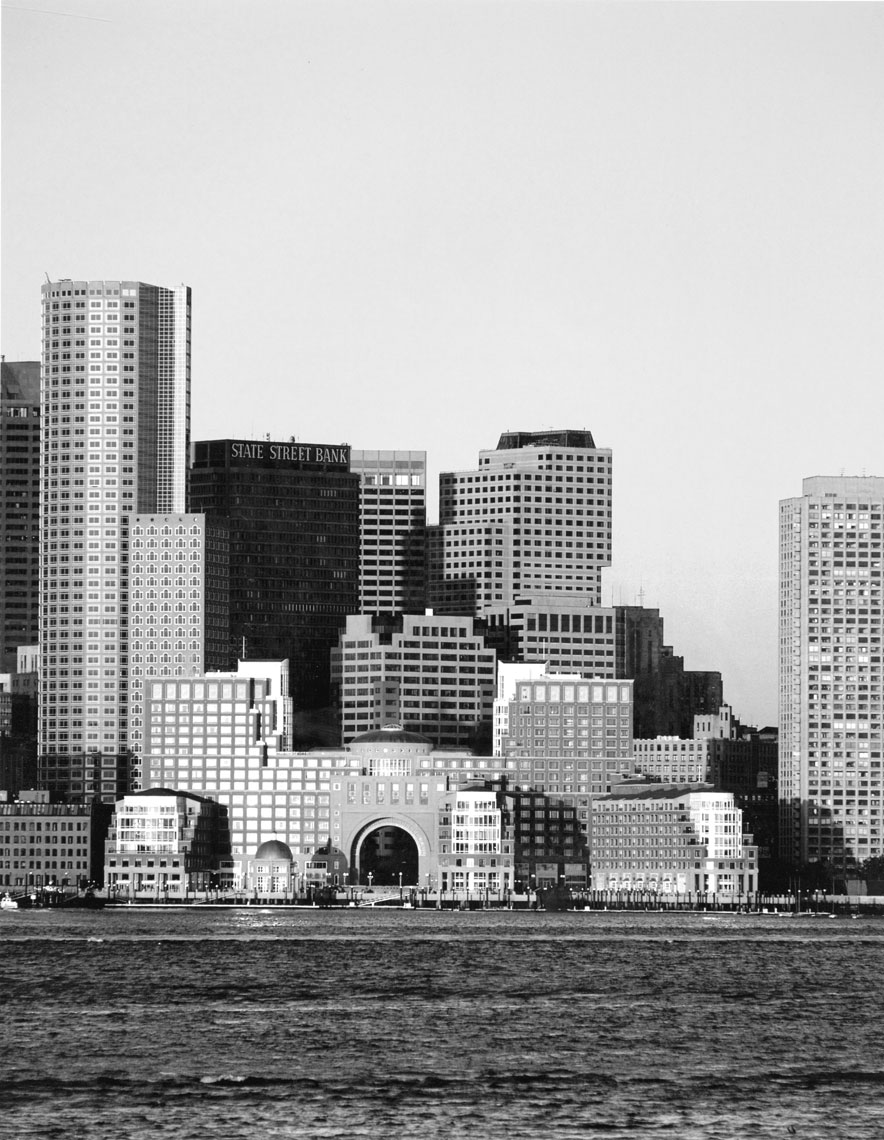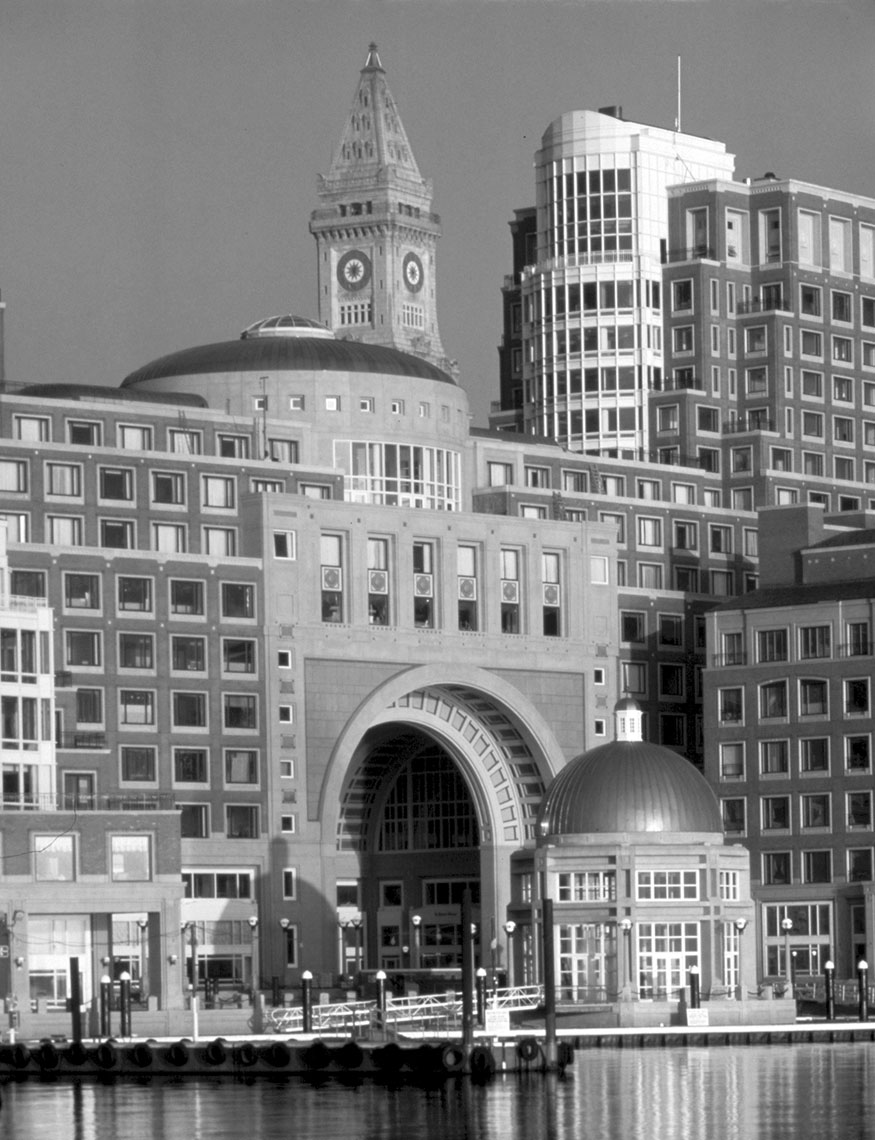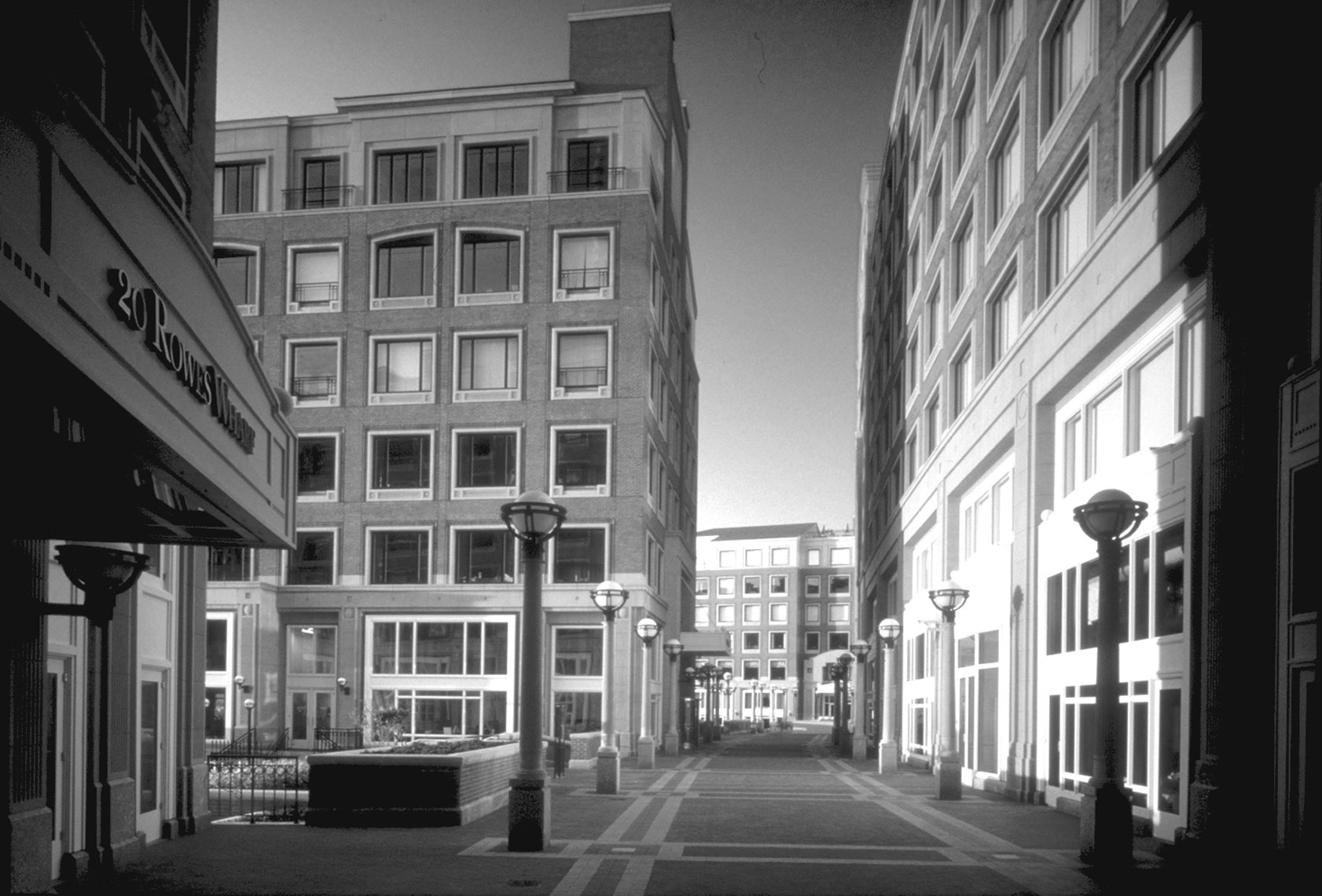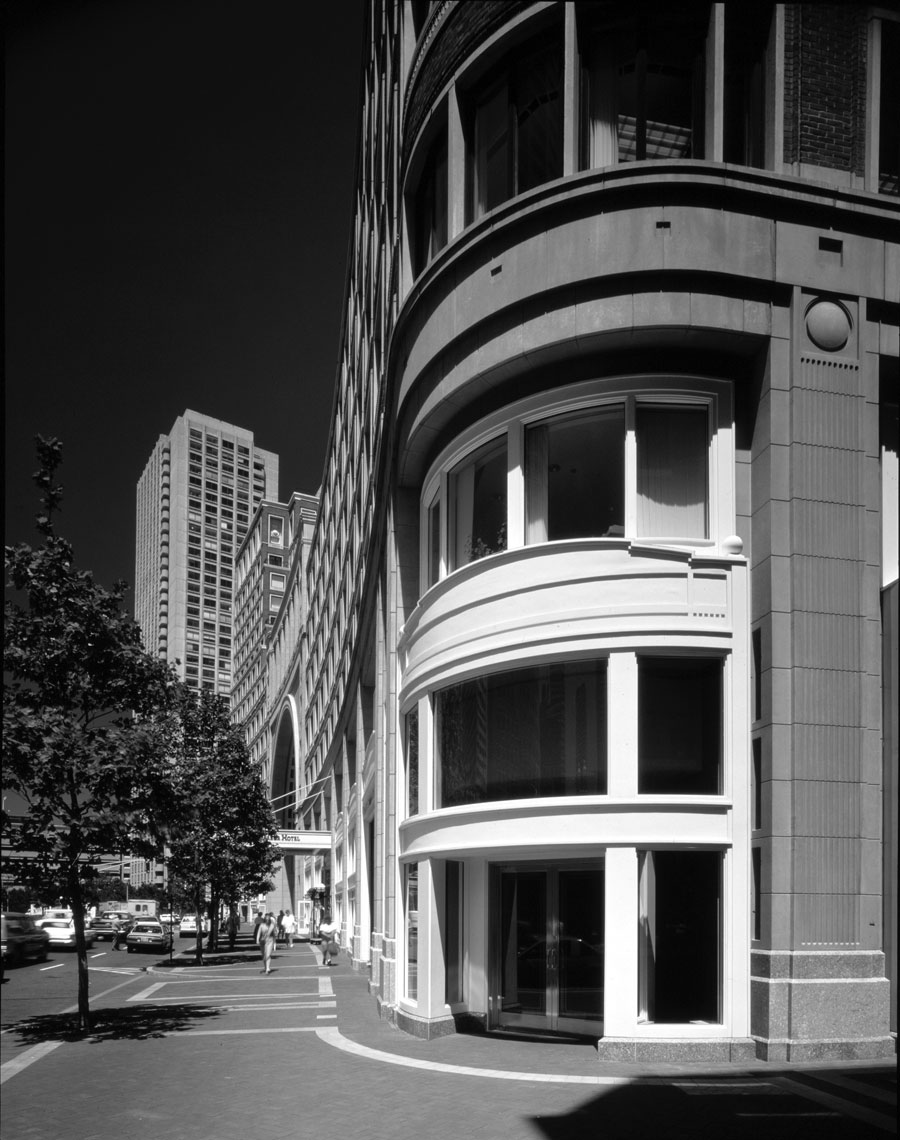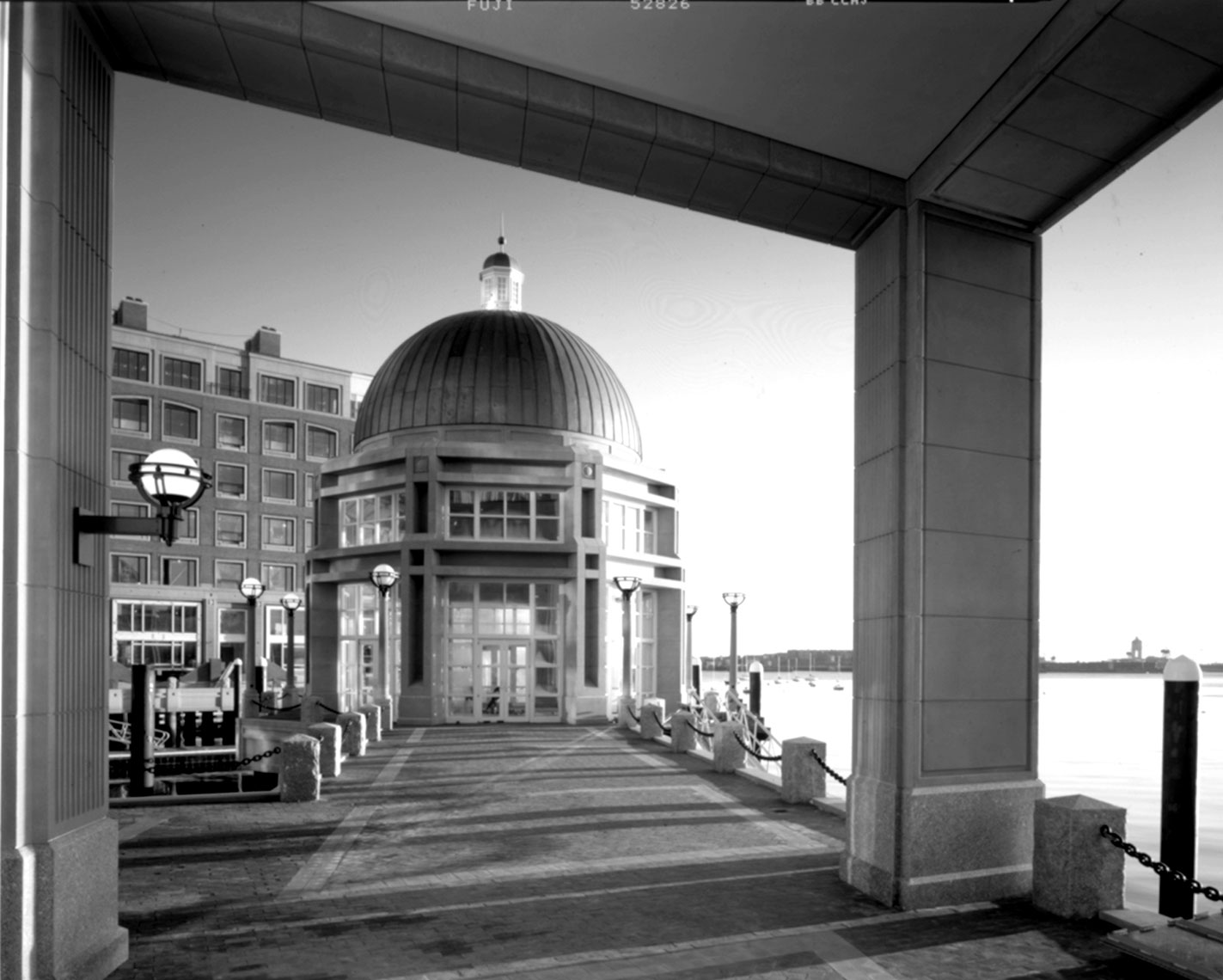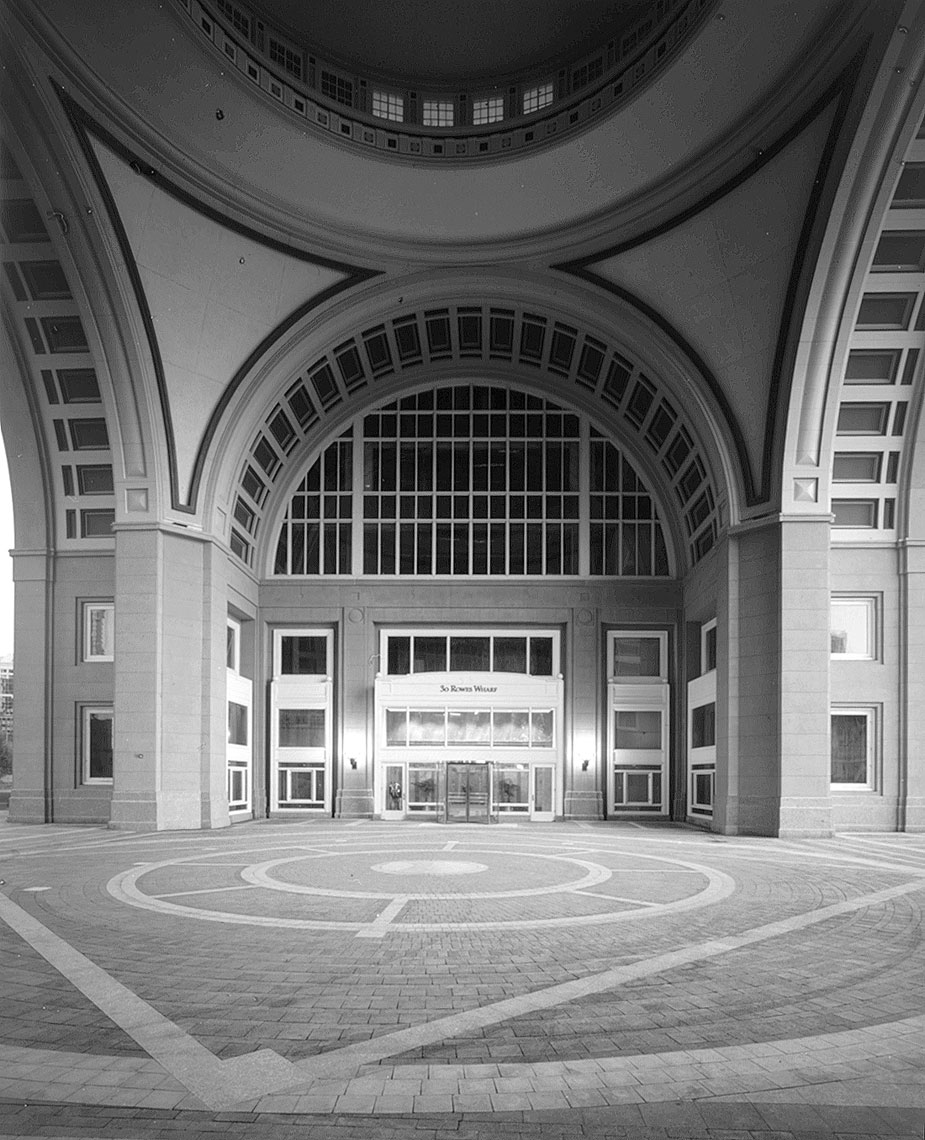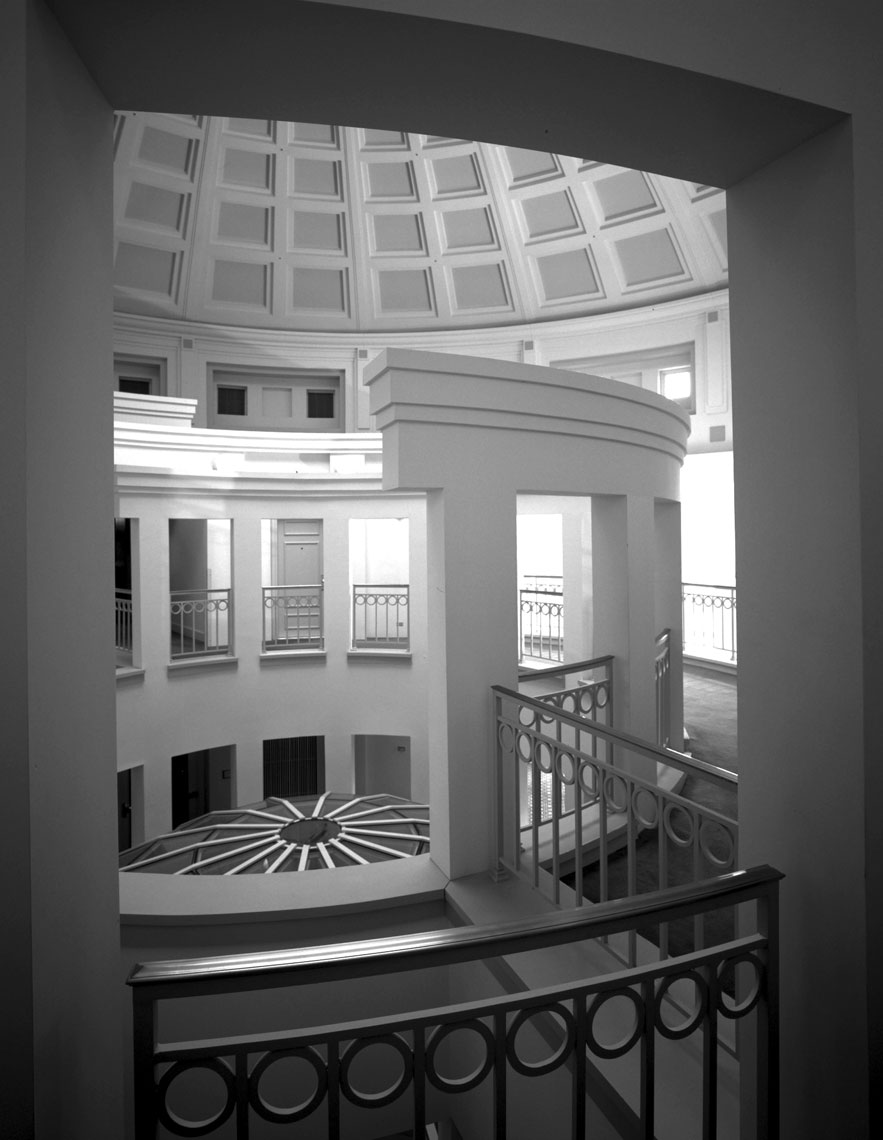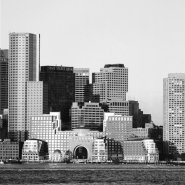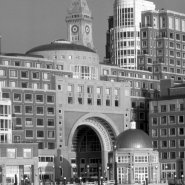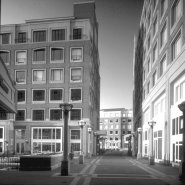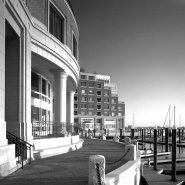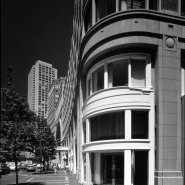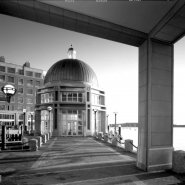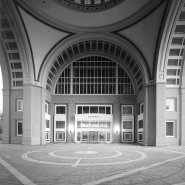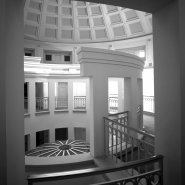Rowes Wharf
The "uniquely Bostonian" Rowes Wharf development was designed to fit in with the fabric of historic Boston while adding to the architectural vocabulary of the city. Rowes Wharf connects with the texture of the city, restoring the urban fabric, contributing to the public realm, and establishing continuity with the traditional city.
The wharf buildings at Rowes extend a welcome to those approaching the city by boat and frame the arched centerpiece, the gateway to the city. Like the traditional wharf buildings which have served Boston Harbor for over two centuries, the wharf buildings at Rowes are very straightforward; almost industrial in their appearance.
The tradition of finger piers are continued at the development. Additionally, the ferry pavilion enhances public use and prolongs the viability of the waterfront as a public amenity. The private domain of hotel, residential, and commercial uses is enclosed by a continuous habitable wall.
The walkway was conceived as a public space that would connect the building sites and allow for full access to the waters edge. To emphasize the accessible nature of the development, a grand ramp connects the upper walkway with the lower waterfront walkway that circulates around each finger pier building.
